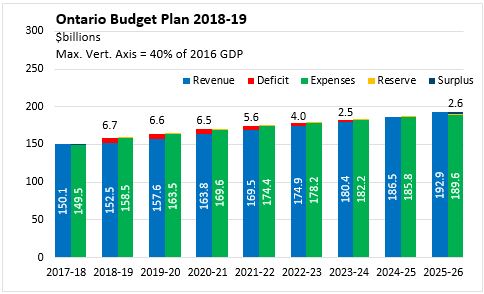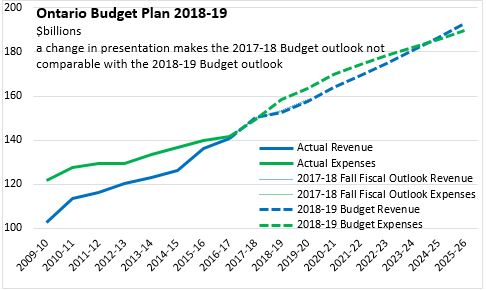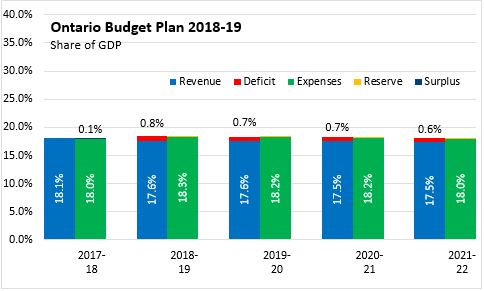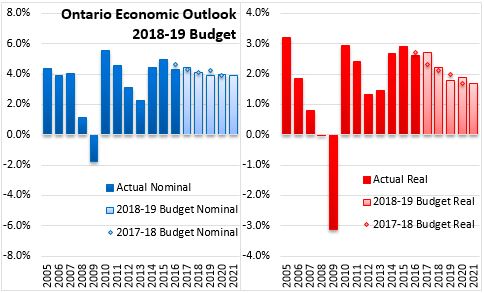The Economics and Statistics Division maintains archives of previous publications for accountability purposes, but makes no updates to keep these documents current with the latest data revisions from Statistics Canada. As a result, information in older documents may not be accurate. Please exercise caution when referring to older documents. For the latest information and historical data, please contact the individual listed to the right.
<--- Return to Archive
For additional information relating to this article, please contact:
March 29, 2018ONTARIO BUDGET 2018-19 Ontario's Budget for 2018-19 returns to a deficit at $6.7 billion after forecasting a surplus of $642 million for 2017-18. Ontario's fiscal plan anticipates declining deficits over the subsequent five years before returning to balance and surplus in the middle of the next decade. Ontario's fiscal plan includes annual reserves of $700 million in each of the next 8 fiscal years.

As of the Fall 2017 Economic and Fiscal Outlook, Ontario's fiscal plan is now presented on a different basis than was shown in last year's Budget (making fiscal plans not comparable with one another). From 2017-18 through 2025-26, Ontario's revenues are projected to grow at an annual average pace of 3.2 per cent which expenditures grow at a pace of 3.0 per cent.

Ontario's planned deficit for 2018-19 amounts to 0.8 per cent of GDP. Ontario's revenues are forecast to maintain a steady share of projected nominal GDP over the next four fiscal years, falling from 17.6 per cent to 17.5 per cent. Expenditures are projected to decline from 18.3 per cent of GDP to 18.0 per cent.

Ontario's economic growth was somewhat stronger than anticipated for 2017, while growth is now projected to be slightly slower than expected for 2018. Steady growth is projected based on rising exports (especially to the US), business investment to expand capacity along with higher employment, wages and consumer confidence. While housing has been a source of stronger growth for Ontario, the impacts of rising interest rates and financial measures to cool housing demand are projected to have an effect on the residential sector in 2018 and 2019.

Key Measures and Initiatives
Ontario's Budget lays out new priorities on social initiatives to share the benefits of economic growth, including:
- Increased transparency and progressivity of personal taxation by replacing surtaxes with tax rates and brackets
- Increasing R&D credits for research-intensive companies.
- Free preschool for children as young as 2.5 years of age
- $750 per household led by a senior aged 75 years of age or older to offset home maintenance costs
- Eliminating deductible and co-payments for seniors medication under OHIP
- Starting (summer 2019) a new Ontario drug and dental benefit program
- Increasing spending on mental health and addictions programming by $2.1 billion over 4 years
- Annual increases of 3 per cent per year over 3 years of social assistance recipients along with simplified programs
- $500 million over three years to expand rural broadband
Ontario Budget 2018-19
<--- Return to Archive